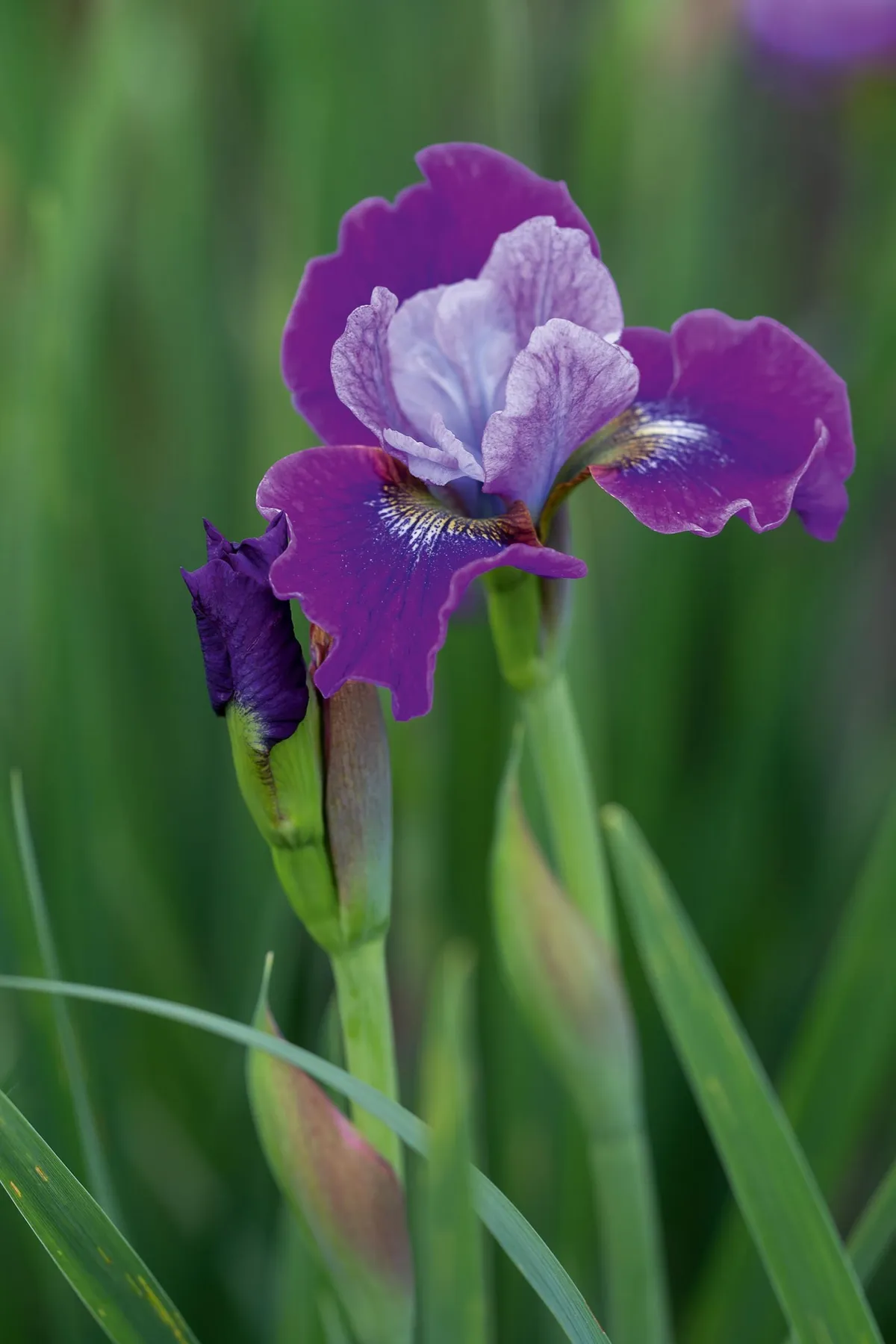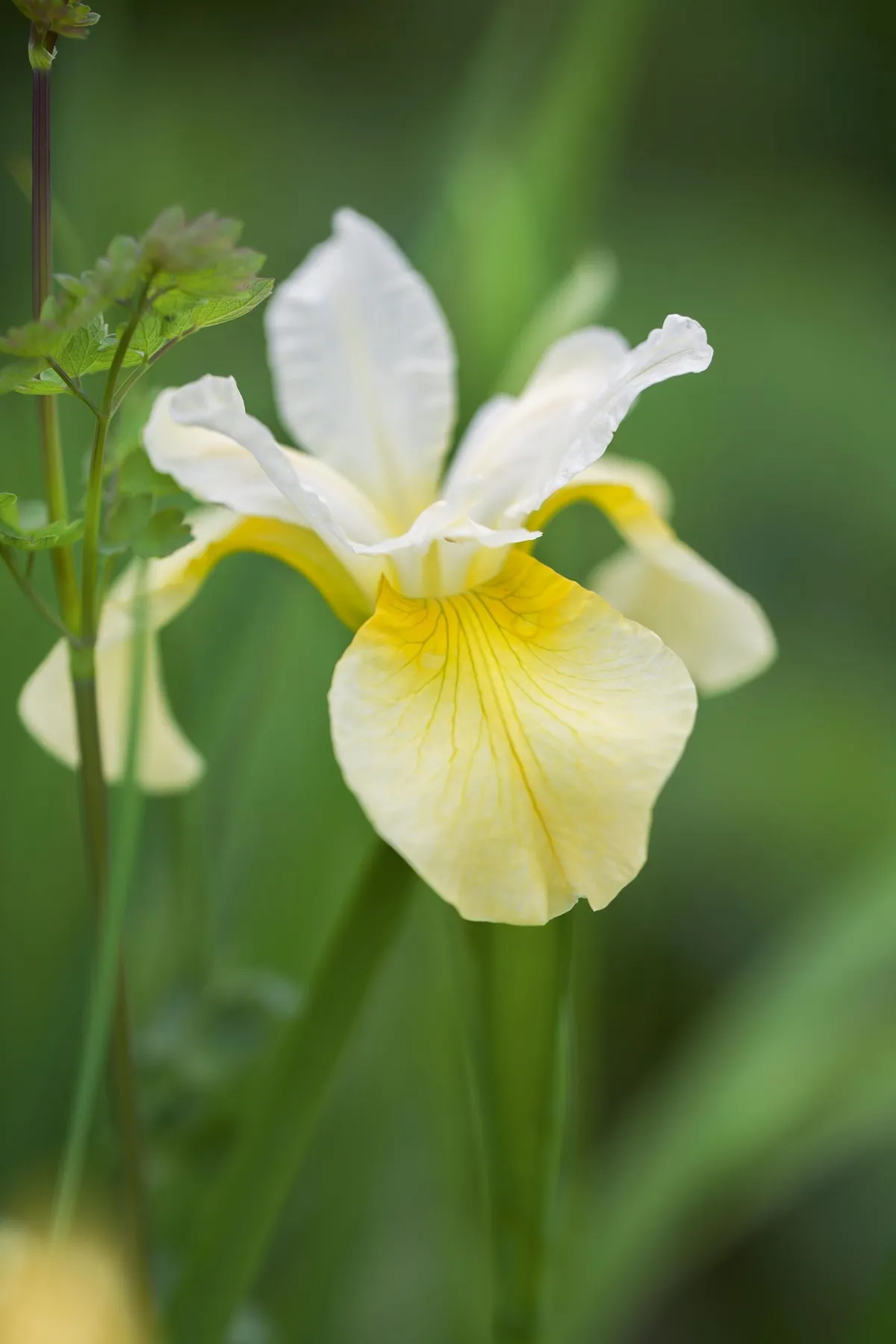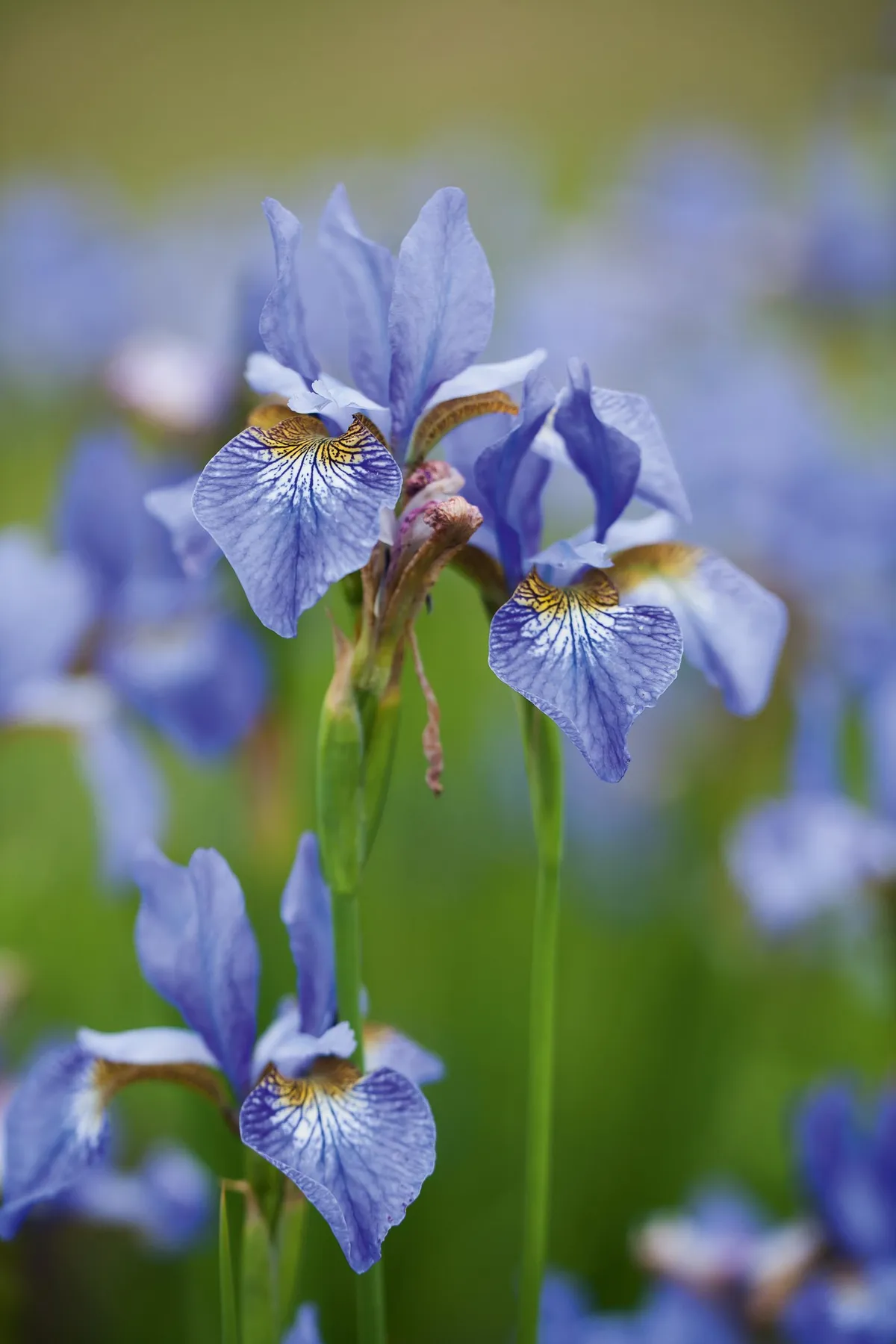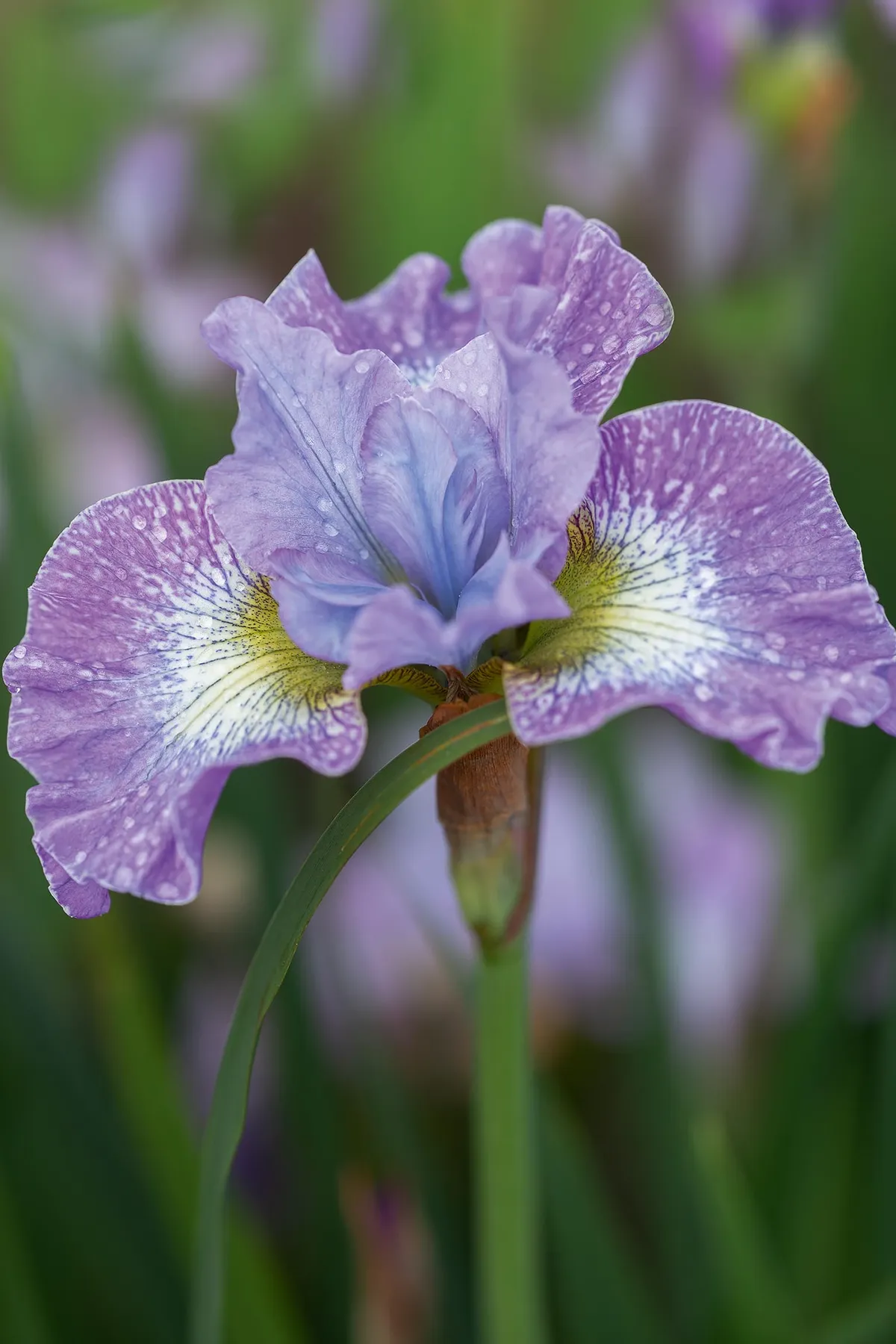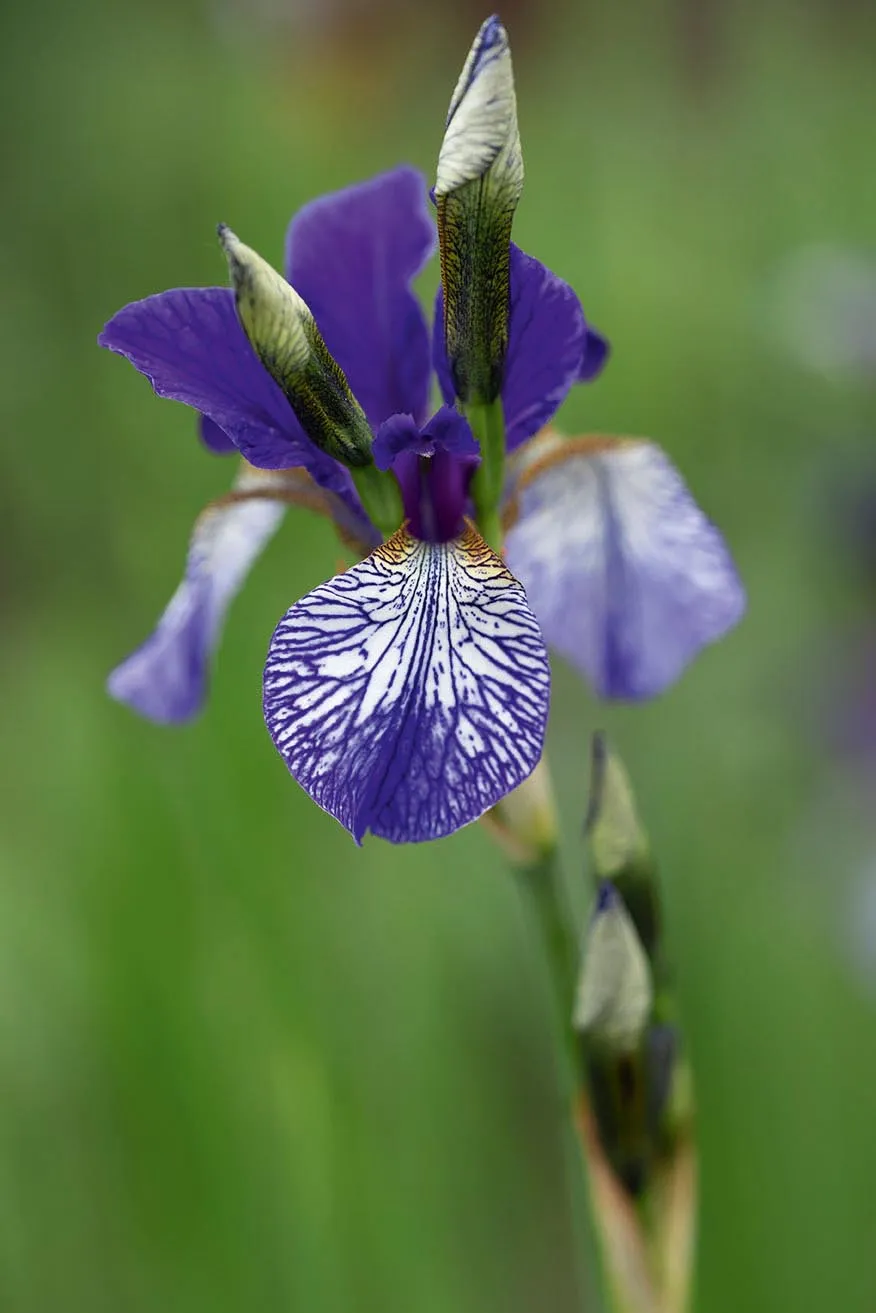Siberian irises are rhizomatous herbaceous perennials with narrow, grassy foliage. The branched stems bear up to five violet-blue flowers, 6-7cm wide, in early summer. Iris flowers are made up of standards (three upright petals) and falls (the three lower petals that flare out), which in Siberian irises are often veined purple-white.
The haft (the base of the falls where they begin to narrow) is generally golden yellow. Some also have what is known as a signal – a bright spot of contrasting colour flaring out from the haft at the base of the fall. Most garden cultivars are hybrids of Iris sanguinea, from Russia, Mongolia, China, Japan and Korea, and Iris sibirica, from Europe and Central Asia. Irises flower from mid-May to end of June. Older cultivars tend to flower earlier.
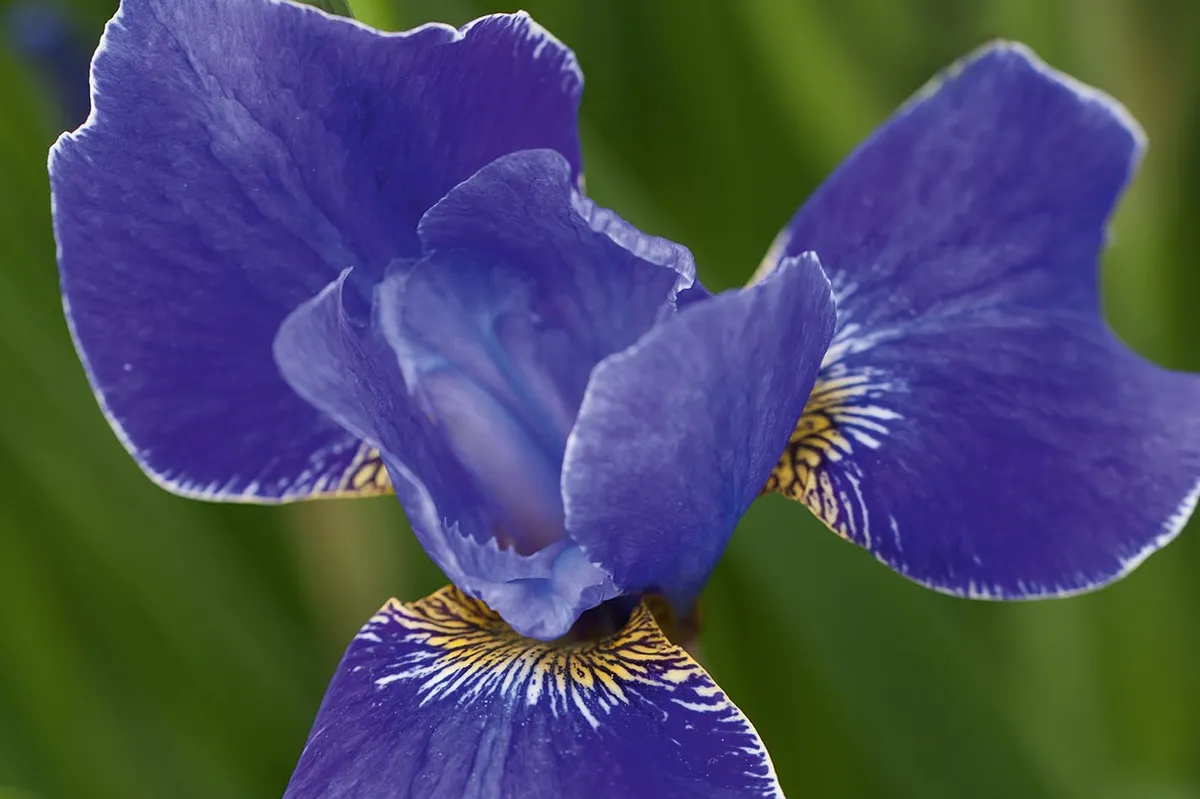
Iris stems grow up to 1.2m tall and they are best grown in good light without too much competition from neighbouring plants. These are very hardy plants. All have with an RHS hardiness rating of H7 and are suitable for gardens in USDA zones 3a to 9b.
How to grow Siberian irises
How to divide Siberian irises
Unlike bearded irises, Siberian irises can be treated like any other perennial, so when a clump becomes shy flowering you should lift, divide and replant. Palm-sized clumps are best for transplanting; smaller divisions can take up to two years to reach a size where they will flower. Carefully dig up the iris rhizomes with a garden fork and cut down the leaves to a short fan (the roots must be kept moist while the plants are out of the ground). Plant the iris rhizomes at least 5cm deep (slightly deeper in sandy soils) and at 30-45cm spacing depending on desired effect.
When to divide Siberian irises
Spring is the best time to divide irises, with August as an alternative. If growing in well-drained soil, then water until they are established. Once the iris roots are down, they usually look after themselves. It’s best not to replant when frosts are likely; you can expect losses if you lift and divide during late autumn or winter.
Growing irises from seed
Although iris cultivars can only be vegetatively propagated, it is possible to raise plants from seed, and you will get a range of interesting, colourful, good garden plants within just a few years. To start your seeds indoors, you will need to cold stratify them. First soak the seeds for three to five days, then place them in a plastic bag with moist vermiculite and pop the bag in the fridge for up to 60 days (check the moisture level of the vermiculite periodically). After 60 days, some of your seeds may already have sprouted. The rest will germinate within days of being removed from the refrigerator, prick out when large enough to handle into rigid plug trays and on into 9cm pots. The plants will flower within three years after sowing.
Alternatively, you can sow seeds in December to February and place in a cold greenhouse or polytunnel and germination should be straightforward. The flowers are hermaphroditic (meaning they have both male and female organs) and are generally pollinated by insects, although self fertilisation is possible.
Discover the best Siberian irises to grow
1
Iris ‘Papillon’
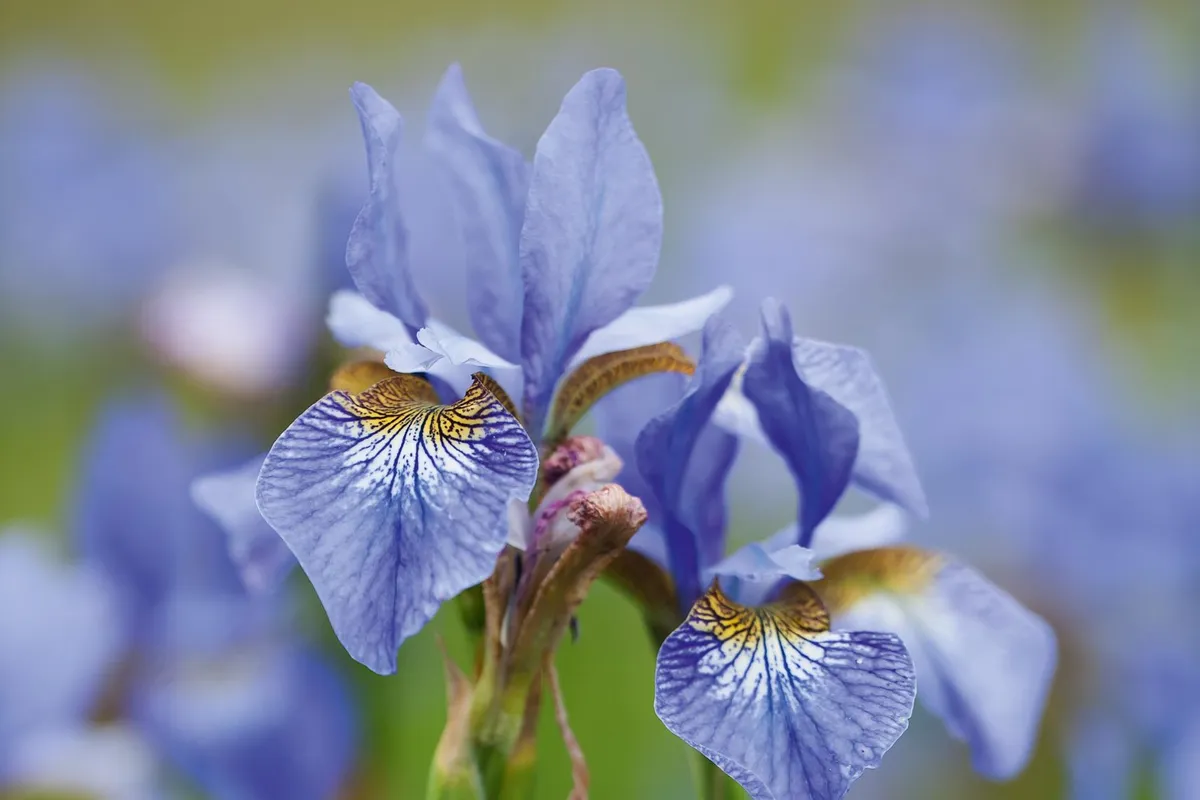
Registered by WR Dykes in 1923, this easy, fast-growing floriferous iris is a form of Iris sibirica, the species whose flowers are pure China-blue in its true form. With light-blue, translucent petals and sheaths of grassy leaves, an iris that looks best near water. 90cm.
2
Iris ‘Silver Edge’

One of the early tetraploid iris cultivars, bred by Currier McEwen in 1974, and still popular. Large, two-tone, blue flowers with a consistent silver thread edging each fall (some of the modern edges can be inconsistent), held high above grey-green foliage. 75cm. AGM. RHS H7.
3
Iris ‘Butter and Sugar’
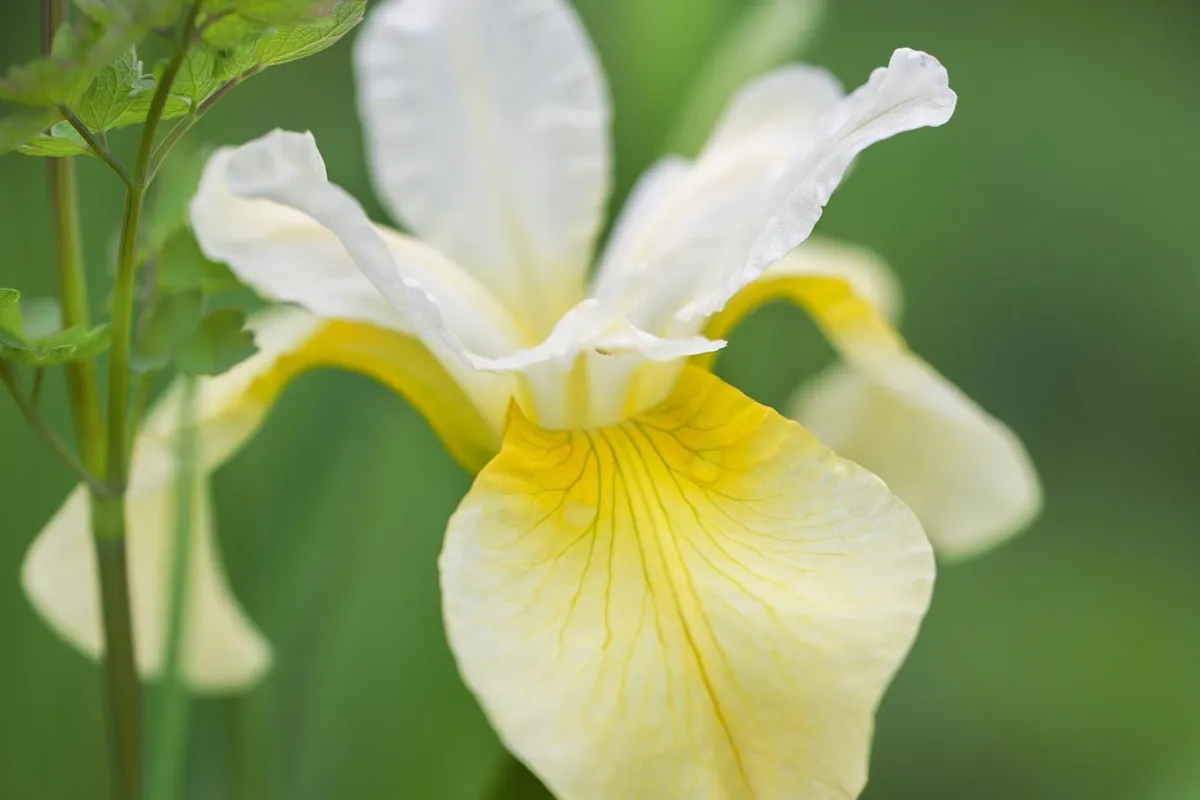
Bred by Currier McEwen in 1976, this hybrid iris performs better for those who garden in warmer areas. In the past, Siberian irises with yellow in their flowers tended to fade over the life of the flower, but this one has proved to be more consistent. 80cm. RHS H7, USDA 3a-8b.
4
Iris ‘Snowcrest’
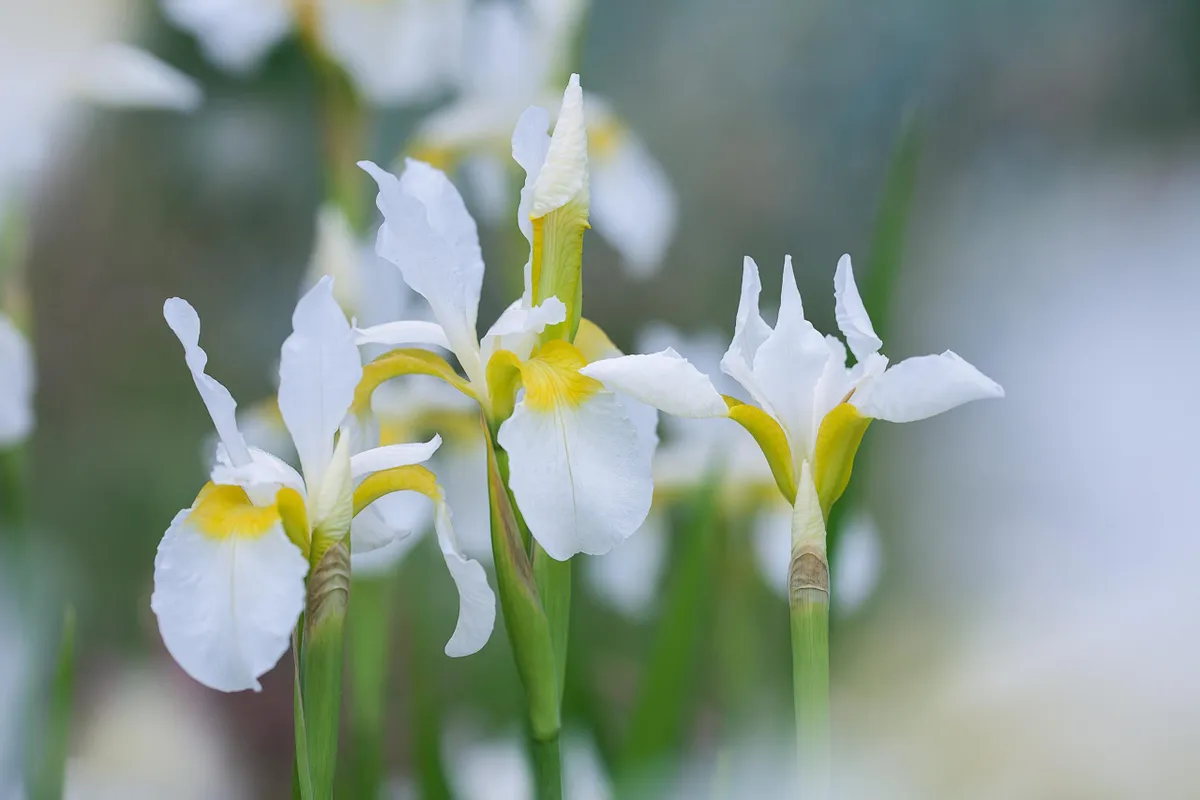
An old cultivar, and likely to be a white form of Iris sanguinea. Translucent white petals with prominent yellow hafts open from long slender buds. More modern white irises are generally shorter, which may suit some. 90cm. RHS H7, USDA 3a-8b.
5
Iris ‘So Van Gogh’
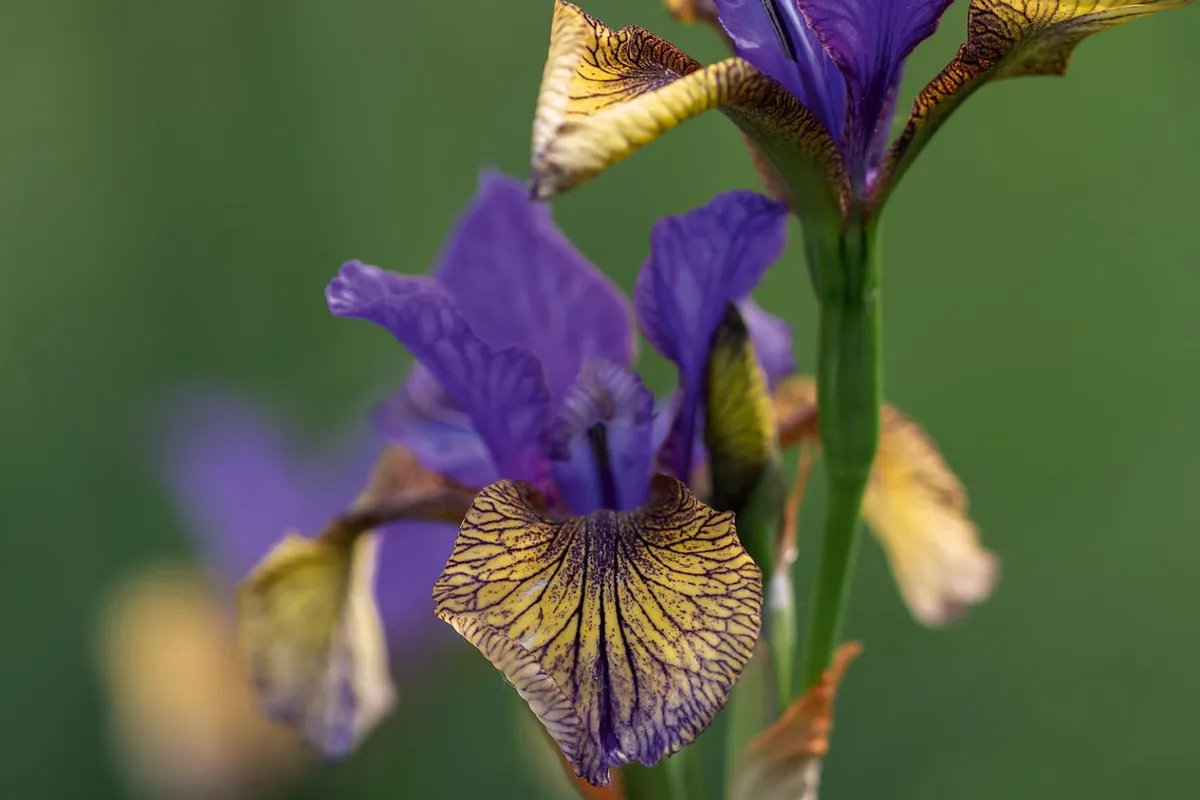
A modern iris offering from US breeders Jan Sacks and Marty Schafer, who have pushed the colour range with diploids. Their iris hybrids have brought a breath of fresh air to the Siberians. Blue-violet standards and yellow falls, lighter at the edge and veined blue-violet. 75cm.
6
Iris ‘Fond Kiss’
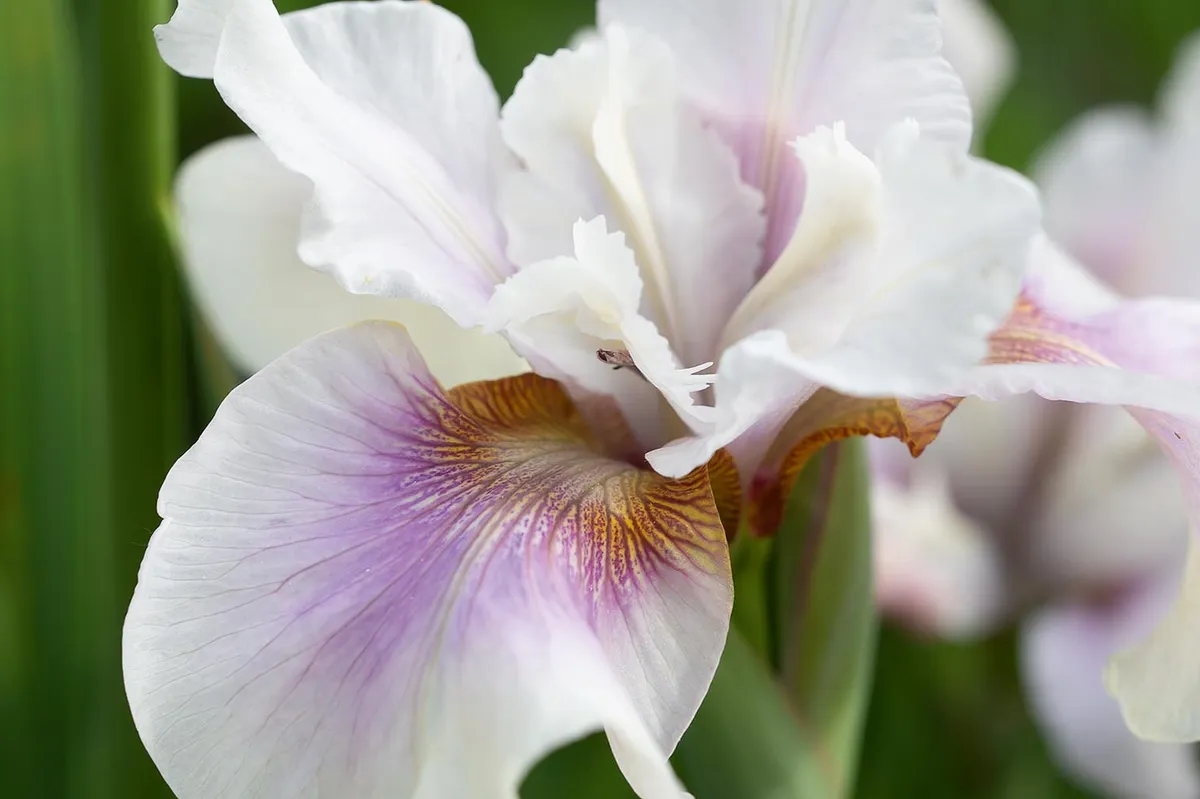
Another one from Jan Sacks and Marty Schafer, bred in 1999. The delicate blush of exquisite, pink veining at the throat that suffuses the ivory-white falls is unique among Siberian irises. This iris hybrid has justly won many awards. Mid-season, reblooming. 85cm.
7
Iris ‘Salamander Crossing’

A hybrid iris from Jan Sacks and Marty Schafer. The tall iris stems stand proudly above most others. Mid-season flowers of the palest lavender. Pale-yellow falls with lavender speckling and deep lavender veining on gold signals. 1m.
8
Iris ‘Stephen Wilcox’
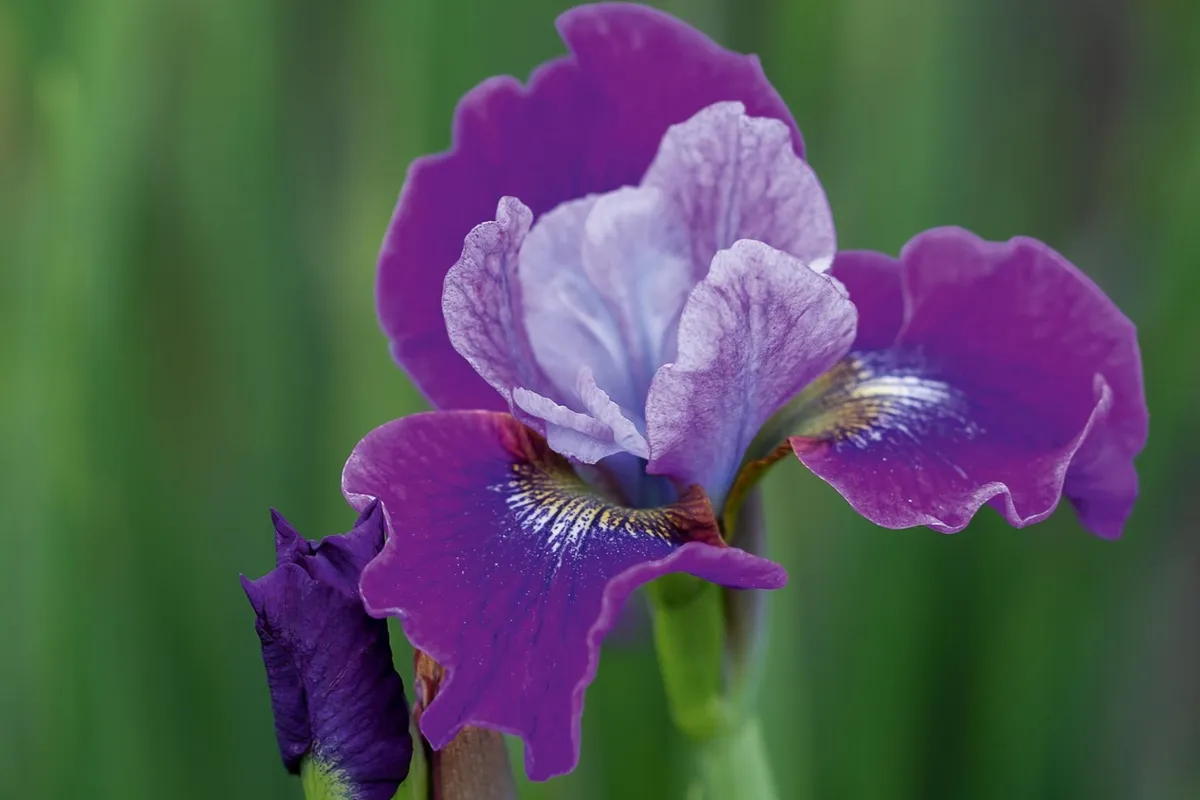
Raised by Jennifer Hewitt in 2003, this iris's rich-magenta falls deepen to purple at the haft. The wavy edged falls, held horizontally, give the flower a distinctive and attractive appearance. All in all a good plant, which won a Dykes Medal in 2011 – the highest award an iris can receive. 65-70cm.
9
Iris ‘Pansy Purple’
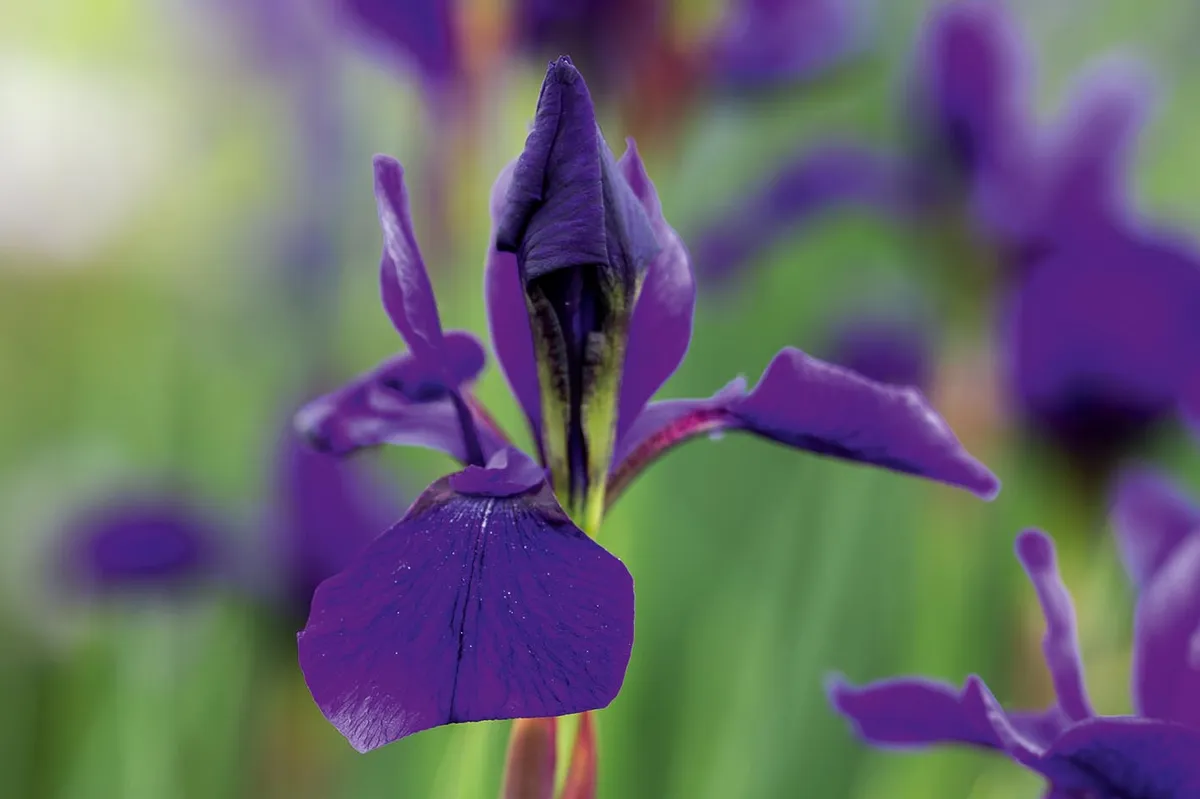
This iris is grown in the USA yet deserving to be better known in the UK. Its flowers are the texture of brushed velvet and the colour of a ripe fig. A plant that stands out among the many cultivars I have grown. Bred by Currier McEwen in 1971. Flowers mid- to late season. 70cm.
10
Iris ‘Wealden Carousel’

Raised by Olga Wells from Sissinghurst, Kent, in 2008. A tall form iris, with deep violet-purple standards. The primrose-yellow falls are heavily veined, merging to solid colour at the tips and deepening to gold at the hafts. Flowers mid-season. 1.2m.
11
Iris ‘Shrawley’
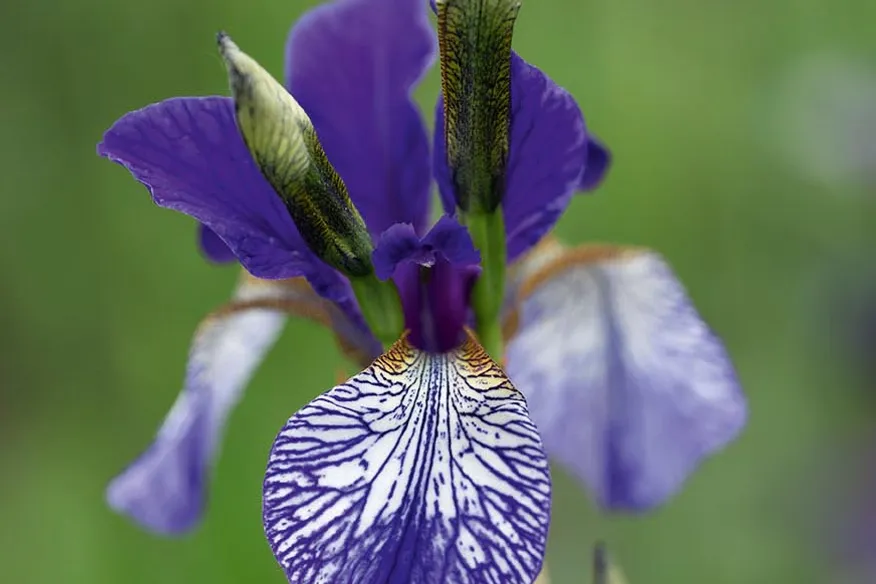
A Siberian iris that is a lot taller than most in this group. It was discovered in a garden near the village of Shrawley in Worcestershire and became available from the 1970s. It appears to be a form of Iris sibirica in a rich blue with white falls strongly veined in blue. 1m.
12
Iris ‘Lavender Fair’
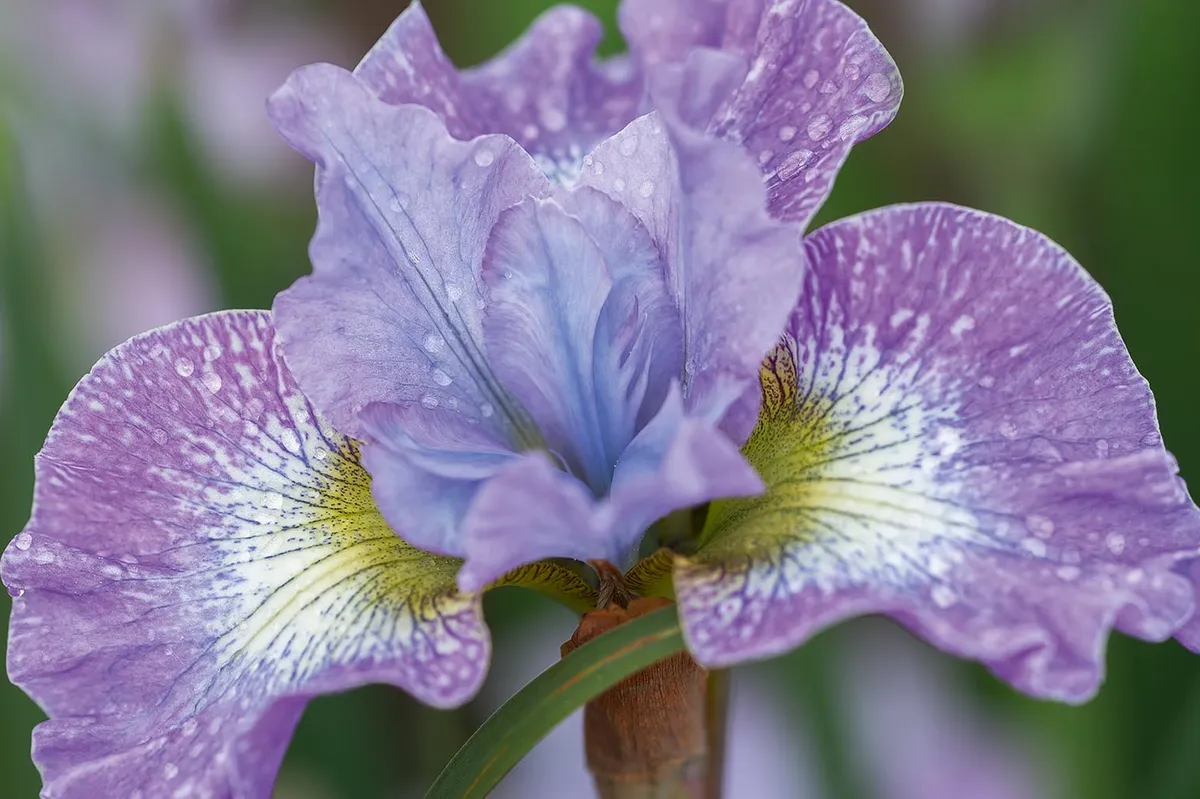
This outstanding form was introduced by US hybridiser Robert Hollingworth in 1999. An early blooming iris with attractive, open, ruffled flowers of light lavender and blue standards, and medium lavender falls with a large ivory signal. 75cm.
Where to see and buy irises
• Aulden Farm, Leominster, Herefordshire HR6 0JT. Tel 01568 720129, auldenfarm.co.uk. Opens for NGS.
• The Gobbett Nursery, Farlow, Kidderminster, Worcestershire DY14 8TD. Tel 01746 718647, thegobbettnursery.co.uk
• Lilies Water Gardens, Broad Lane, Newdigate, Surrey RH5 5AT. Tel 01306 631064, lilieswatergardens.co.uk
• The Manic Botanic, Online nursery. Tel 07790 193722, themanicbotanic.co.uk
• Parham House & Gardens, Parham Park, Pulborough, West Sussex RH20 4HS. Tel 01903 742021, parhaminsussex.co.uk
• Woottens of Wenhaston, The Iris Field, Hall Road, Wenhaston, Suffolk IP19 9HF. Tel 01502 478258, woottensplants.com
Don't miss our interview with iris specialist nursery owner Emma Robertson

